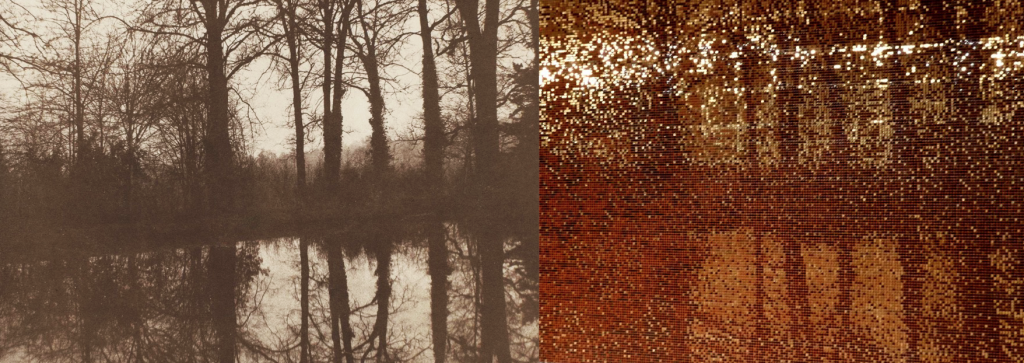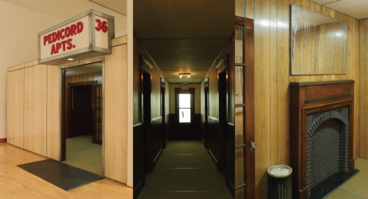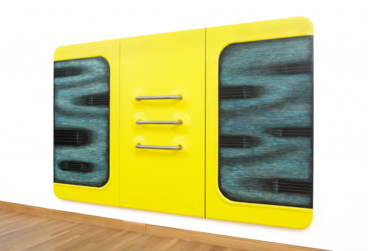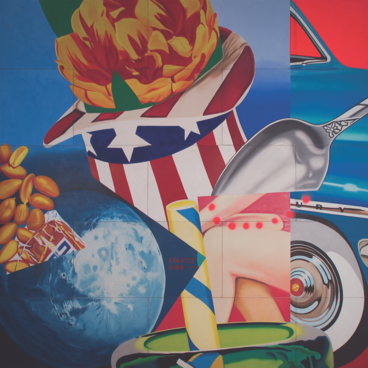Upon entering the Weisman Art Museum one immediately sees WAM’s iconic 1964 World’s Fair Mural by Roy Lichtenstein, greeting each visitor as she enters through the front doors. The mural portrays a young and radiant woman who (from a Minnesotan’s perspective) seems to be overcome with the joy of feeling winter melt away. Her excitement is palpable as she feels the refreshing breeze of a warming spring. WAM’s visitors often stand for a moment in front of this mural, perplexed yet intrigued by the woman’s peculiar skin composed of Lichtenstein’s signature element, enlarged Ben Day dots. The dots represent a printing process to mass-produce colored images for newspapers and comic strips. By Lichtenstein choosing to emphasize these dots’ purpose in his mural, he is confronting his viewers with the processes and techniques of mass-production.
It is for a similar purpose that Richard Barlow became inspired by William Henry Fox Talbot’s photograph Trees and Reflections, created in 1842. The photograph utilizes a type of technology called the calotype process. A calotype uses salt paper to capture a latent light image of a negative, which is then exposed through a series of acid washes, or baths. The use of a negative allows for the same image to be reproduced multiple times to similar effect, making it an emblem of mass-production and the age of industrialism. In response, Barlow created Daily Bromides. In this series Barlow would hand-paint thirty postcards featuring the Trees and Reflections photograph. He then selected one individual at random and sent this person one postcard for thirty days anonymously. He accomplished this task with thirty individuals, making nearly one thousand hand-painted Trees and Reflections postcards in the process. The Daily Bromide project multiplied a photographic symbol of industrialism, yet called attention to mass-production through the process of hand-painting one thousand versions of the
same image.
While creating his first Bromide series, Barlow became fascinated with photography’s role in deferring an image of the original scene. In the case of Trees and Reflections, it was a calotype photograph of the scene. What is more, Barlow was not working from the original calotype photograph; he was working from a JPEG image of the calotype. In reality, Barlow found that he was looking at nothing more than the pixels of a calotype of an original scene. Newly inspired, Barlow created Pixelated Bromide, composed of thousands of sequins, during his Jerome Fellowship in 2012.
Since 2014 when Richard Barlow’s Pixelated Bromide first made its appearance on the gallery walls of WAM, visitors greet the work in much the same way as Lichtenstein’s World’s Fair Mural. While many comparisons can be made between Lichtenstein’s and Barlow’s works (such as both works’ inspiration from billboards through popular culture for Lichtenstein and the original billboard method utilizing sequins for Barlow), it is their common effect on WAM’s visitors that most fascinates me. Whether it is Lichtenstein’s Ben Day dots or Barlow’s sequins pulling visitors closer, both foster an act of close looking and appreciation.
- Kate Heller, 2015 Jerry and Lisa O’Brien Curatorial Fellow. Taken from the Spring 2016 Newsletter.



